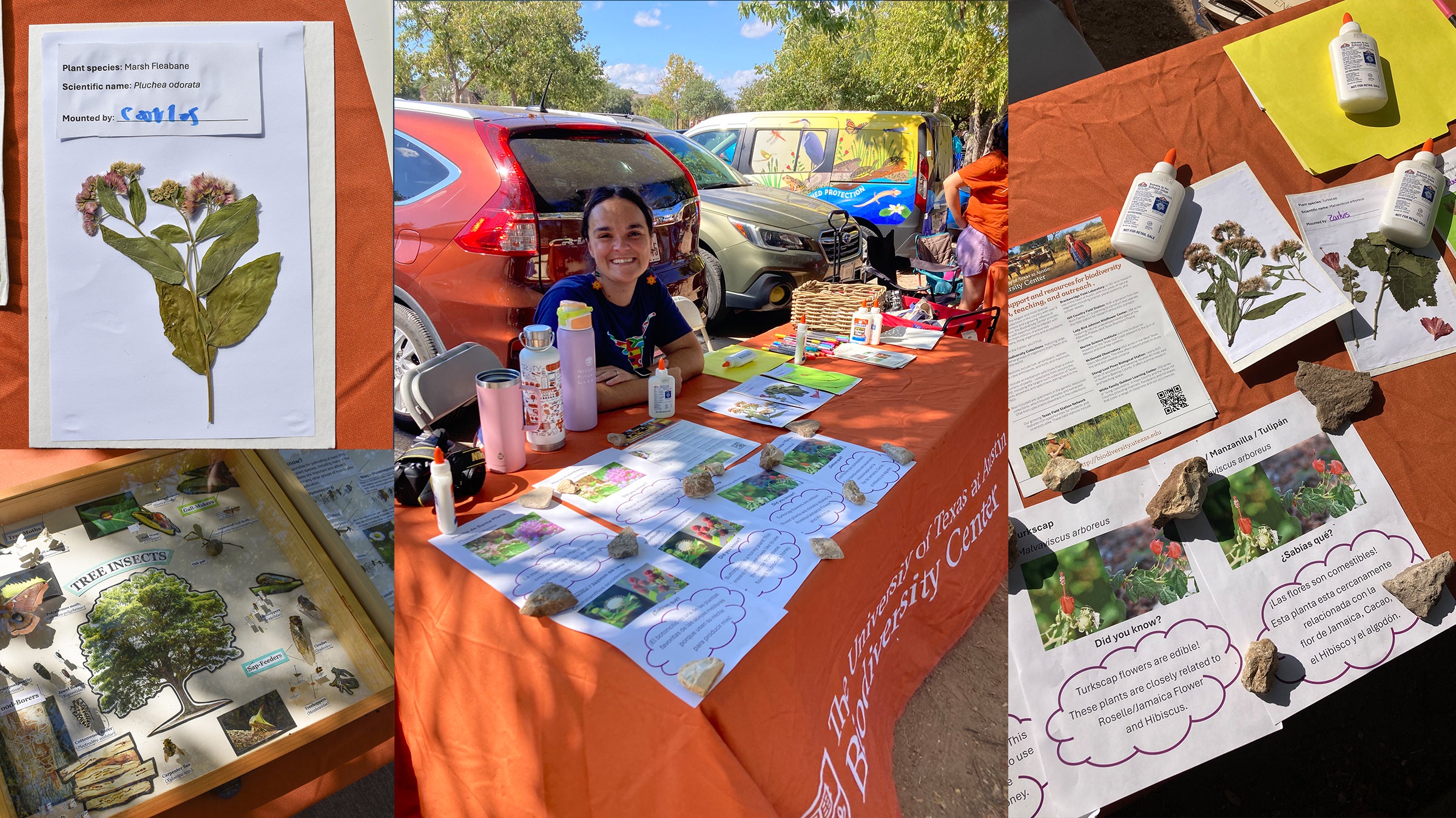
This colorful insect that looks like it’s about to go to a carnival is actually the nymph of Aidemona azteca. The adults of this species are drab in appearance. (Photo: Alex Wild)
Grasshoppers are one of the oldest living group of chewing herbivorous insects, dating back to the early Triassic around 250 million years ago. In Central Texas, we have several different species such as the Spur-throated Grasshopper, the Differential Grasshopper, and Two-Striped Grasshopper.
Grasshoppers belong to the suborder Caelifera, which also includes insects such as crickets and katydids.
The grasshopper starts out as an egg from which a nymph will hatch. The nymph looks like the adult, only much smaller, with a thin exoskeleton, and lacking wings and functional reproductive organs. A grasshopper is hemimetabolous, meaning it goes through six gradual changes involving moulting, and there is no pupal stage. It is considered an adult when the insect has fully-developed wings.
All grasshoppers have mandibles which they use to chew plant tissue. Certain short-horned grasshopper species, under certain conditions involving overcrowding, can change color and behavior and form swarms. It’s at this phase that they are locusts. These swarms sometimes number in the billions and cause crop devastation and resulting famine.
Why do they do this? Survival and serotonin. You might have heard of the latter. For humans, serotonin regulates mood, happiness, and anxiety. For grasshoppers, it can change their behavior drastically.

That's not rain on a window. This is a swarm of locusts in Australia. (Photo: CSIRO)
When weather dries up following periods of rain, these insects gather in places of dwindling vegetation. Larger numbers in close proximity causes them to secrete serotonin. They abandon their usually solitary and unorganized nature as grasshoppers and become the orderly swarm moving together in one direction, stopping only for any remaining areas of vegetation which they quickly consume. Scientists call this stage the “gregarious state.” The largest recorded locust swarm was in 1875, and involved the now extinct Rocky Mountain locust. The swarm was 1800 miles long and 110 miles wide, and contained an estimated 3.5 trillion insects.
Grasshoppers are very hardy insects. Females can lay about 200 eggs per season, but this number can sometimes double. Their eggs are also able to tolerate diverse temperature ranges. They do have a wide range of predators including other insects, birds, and mammals. They can also become infected by bacteria, pathogens, and parasitoids. The naturally-occurring fungus Metarhizium acridum is a somewhat effective means of biological control.

Left: Detail from "Flowers in a Vase" (1685) by Rachel Ruysch. Right: "Chapulines," fried grasshoppers in Mexico. (Photo: Meutia Chaerani / Indradi Soemardjan)
Perhaps because of their ability to greatly impact human populations, grasshoppers have been culturally part of our lives for a long time. During the Greek Archaic Era, they were symbols of ancestral lineage. They have appeared in still life paintings from centuries ago as well as modern cartoon characters (A Bug’s Life). Aesop’s fable, The Ant and the Grasshopper, is about a lazy grasshopper who starves for not being as work-attentive as his neighbor the ant. A large gilded figure of a grasshopper from the 1500s hangs outside a building on Lombard Street in London.
Grasshoppers have been and still are a food source for many from Mexico, to Japan, China, Indonesia. The Ohlone, an indigenous population in the US, would start small grassfires to force grasshoppers into pits where they would be gathered as food. Recently, some companies have been researching grasshoppers as a use for alternative and healthy sources of protein.

PINK GRASSHOPPER
No, that’s not a piece of bubble gum shaped like an insect. This is a real grasshopper. A pink one. This photo sent to us by Donna and Scott Walker in south Fort Worth, TX is a rare find indeed. The pink is due to a genetic mutation called erythrism, which affects a recessive gene similar to the one that causes albinism. Erythrism is an unusual genetic mutation and not well understood. The first record of a pink morph was in 1887 in a katydid.
Because predators can spot pink grasshoppers much easier than the green and brown varieties, there tend to not be many of them that make it to adulthood. The ones that do become full grown can lose the pink, or retain parts of it.
SOURCES
Britt, Robert Roy. “Grasshoppers vs. Locusts: What Makes a Swarm?” June 29, 2009. Live Science (accessed online: https://www.livescience.com/7782-grasshoppers-locusts-swarm.html)
Hillman, Victoria “The Pink Grasshopper – No, It’s Not a Cocktail” National Geographic. June 14, 2013. (accessed online: https://blog.nationalgeographic.org/2013/06/14/the-pink-grasshopper-no-its-not-a-cocktail/)
Porter, Pat. “Grasshoppers” 2018. Extension Entomology. 2018. Texas A&M Forest Service. (accessed online: https://extensionentomology.tamu.edu/insects/grasshoppers/)
O’Donnell, Amanda. “Toddler finds rare pink grasshopper in Austin backyard.” February 18, 2020. Austin American Statesman. (accessed online: https://www.statesman.com/news/20200218/toddler-finds-rare-pink-grasshopper-in-austin-backyard_
Sawe, Benjamin Elisha “What’s the Difference Between Grasshoppers and Locusts?” August 1, 2017. World Atlas: Environment. (accessed online: https://www.worldatlas.com/articles/what-is-the-difference-between-grasshoppers-and-locusts.html)



